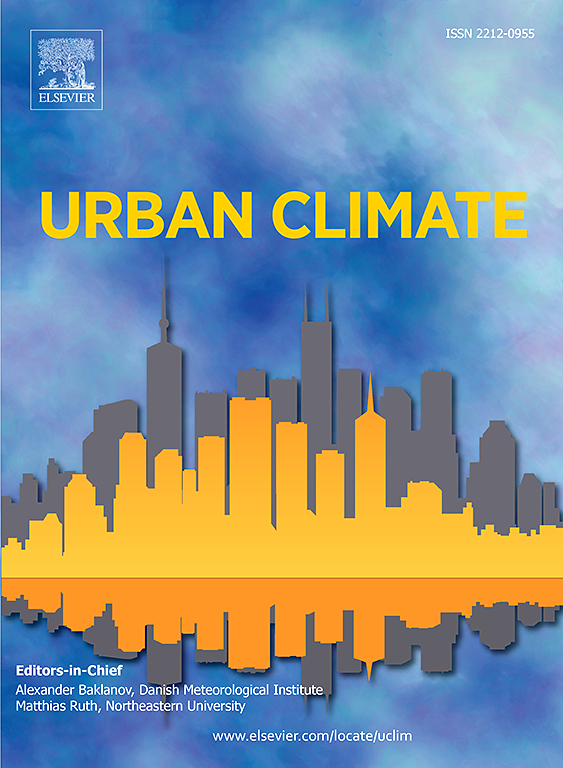加州的火风暴:荒地与城市交界地区的新现实
IF 6
2区 工程技术
Q1 ENVIRONMENTAL SCIENCES
引用次数: 0
摘要
2025年1月在洛杉矶县发生的野火是近几十年来最具灾难性的火灾季节之一,是由极端干旱、高温和强烈的圣安娜风共同驱动的。虽然野火在加州是一个常见的威胁,但这些火灾的强度、频率和规模都是前所未有的,这迫使居民和官员们面临着该州以前从未面临过的挑战。本研究考察了火灾发生前的环境条件,重点关注多源卫星衍生和再分析的土壤湿度、温度、降水异常和风型数据集。南加州的负降水异常导致土壤水分异常枯竭,加上温度异常超过+2.8°C,造成了高度易燃的环境,而阵风加剧了火势的蔓延。利用中分辨率成像光谱仪(MODIS)和欧洲中期天气预报再分析中心(ERA5-Land)数据集,我们进行了空间和时间异常分析,以量化与气候规范的偏差。空间分析结果显示,湿度损失与火灾强度之间存在很强的相关性,特别是在荒地-城市交界区。此外,该研究还强调了叶面积指数(LAI)的下降和长期干旱如何增加了植被的脆弱性,从而导致火灾的迅速升级。研究结果强调,迫切需要制定综合气候适应战略和弹性土地利用规划,以减轻荒地-城市地区的野火风险。本文章由计算机程序翻译,如有差异,请以英文原文为准。
Firestorm in California: The new reality for wildland-urban interface regions
The January 2025 wildfires in Los Angeles County, one of the most catastrophic fire seasons in recent decades, were driven by a confluence of extreme drought, high temperatures, and intense Santa Ana winds. While wildfires are a familiar threat in California, the unprecedented intensity, frequency, and scale of these blazes pushed residents and officials to confront challenges unlike anything the state had previously faced. This study examines the environmental conditions preceding the fires, focusing on multi-source satellite-derived and reanalysis datasets of soil moisture, temperature, precipitation anomalies, and wind patterns. The anomalous soil moisture depletion resulting from negative precipitation anomalies in southern California, combined with temperature anomalies exceeding +2.8 °C, created highly flammable conditions, while gusty winds exacerbated fire spread. Using the Moderate Resolution Imaging Spectroradiometer (MODIS) and the European Centre for Medium-Range Weather Forecasts Reanalysis v5 for Land (ERA5-Land) datasets, we performed spatial and temporal anomaly analyses to quantify deviations from climatological norms. Spatial analysis revealed a strong correlation between moisture deficits and fire intensity, particularly in the wildland-urban interface zones. Additionally, the research highlights how a decrease in leaf area index (LAI) and prolonged aridity have increased vegetation vulnerability, contributing to the rapid escalation of fires. The findings underscore the urgent need for integrated climate adaptation strategies and resilient land-use planning to mitigate wildfire risks in wildland-urban zones.
求助全文
通过发布文献求助,成功后即可免费获取论文全文。
去求助
来源期刊

Urban Climate
Social Sciences-Urban Studies
CiteScore
9.70
自引率
9.40%
发文量
286
期刊介绍:
Urban Climate serves the scientific and decision making communities with the publication of research on theory, science and applications relevant to understanding urban climatic conditions and change in relation to their geography and to demographic, socioeconomic, institutional, technological and environmental dynamics and global change. Targeted towards both disciplinary and interdisciplinary audiences, this journal publishes original research papers, comprehensive review articles, book reviews, and short communications on topics including, but not limited to, the following:
Urban meteorology and climate[...]
Urban environmental pollution[...]
Adaptation to global change[...]
Urban economic and social issues[...]
Research Approaches[...]
 求助内容:
求助内容: 应助结果提醒方式:
应助结果提醒方式:


